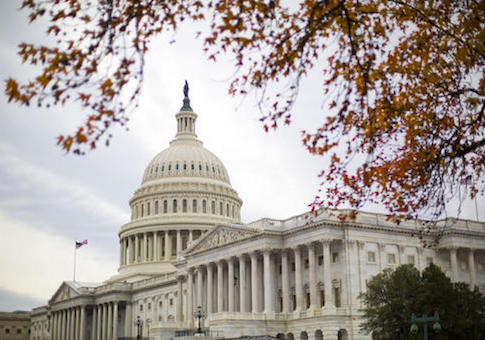The federal government remains on an unsustainable fiscal path, with its net operating cost more than doubling over the past fiscal year, according to an audit from the Government Accountability Office.
The government collected $3.3 trillion in taxes and other revenues in fiscal 2016, an increase of $11.3 billion from the previous year. The government's gross costs totaled $4.5 trillion.
The government's net operating cost, the difference between the costs it incurs and the revenue it takes in, rose dramatically to $1 trillion in fiscal 2016. This figure increasing by $533.2 billion in one year, more than double the previous fiscal year.
The departments responsible for the largest shares of the government's net cost were Health and Human Services, Veterans Affairs, and Defense, as well as the Social Security Administration, which is an independent agency.
According to the report, spending on social insurance programs like Medicare and Social Security increased by $44.8 billion and $37.1 billion respectively, while the Defense Department's spending on military operations, readiness, and retirement benefits increased by $47.3 billion.
The federal government's liabilities totaled $22.8 trillion, including roughly $14.2 trillion in public debt and $7.2 trillion in federal employee and veteran benefits payable. Outstanding intergovernmental debt, which accumulates when one part of the government borrows from another, totaled an additional $5.5 trillion.
"As budget deficits continue to occur, the government will have to continue to borrow from the public," the report states. "Instances where the debt held by the public increases faster than the economy for extended periods can pose challenges to the sustainability of current fiscal policy."
Debt held by the public as a share of GDP has increased greatly since the 1940s, according to the report. Today the debt-to-GDP ratio stands at 77 percent, well above the historical average of 44 percent since 1946. The auditors project that the debt-to-GDP ratio will surpass its historic high of 106 percent within 15 to 25 years.
The auditors intended to evaluate whether the federal government was operating in an effective and efficient way based on reliable and complete financial information.
"Our report on the U.S. government's consolidated financial statements for fiscal years 2016 and 2015 underscores that much work remains to improve federal financial management and that the federal government continues to face an unsustainable long-term fiscal path," the auditors said.
The audit office identified ways the government could move toward greater fiscal sustainability. One way is by preventing improper payments. The government has doled out more than $1.2 trillion in improper payments since fiscal 2003.
The White House did not respond to requests for comment.
